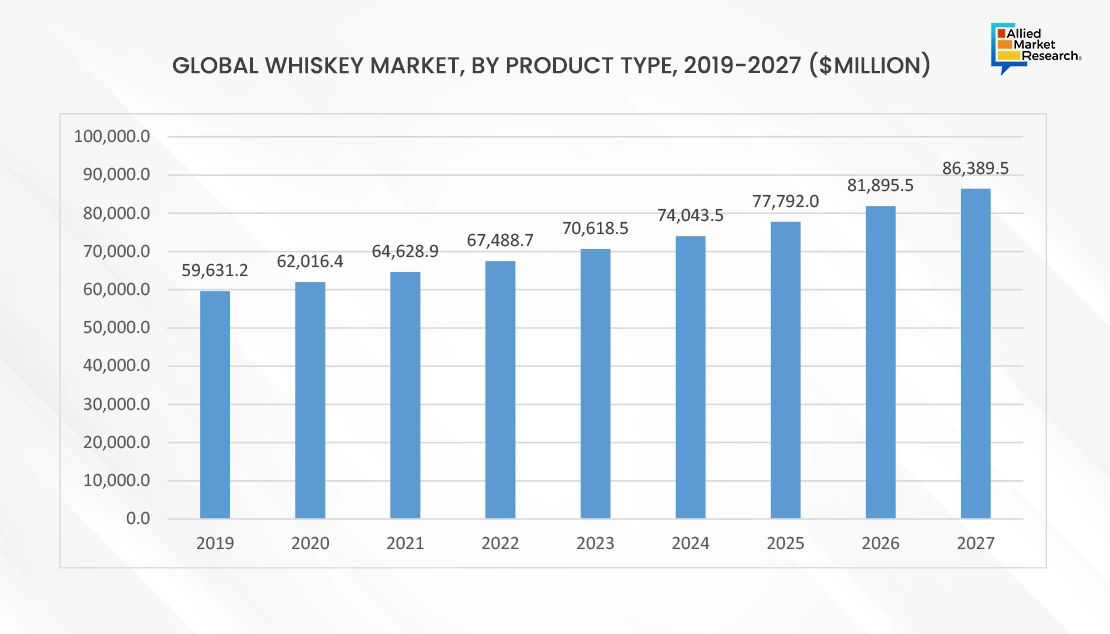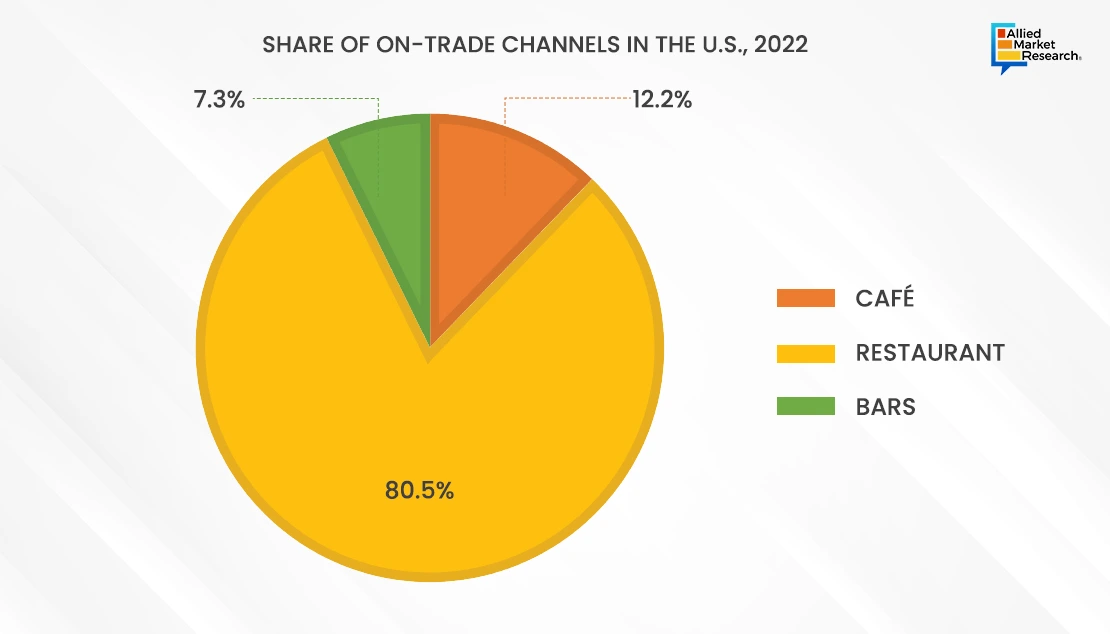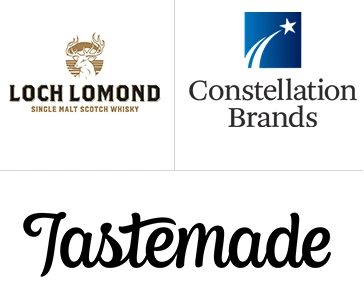Whiskey Market: Navigating the Spirited Terrain

Whiskey has a rich and popular history that engages with several cultures, celebrations, and occasions across the globe. This admired spirit has witnessed an interesting evolution, from its early days with limited geographic consumption to becoming a global symbol of craftsmanship and sociability. Beyond its historical significance, whiskey plays a pivotal role in social traditions, representing celebration, and craftsmanship. As we dig into its complex history, we uncover the essence of a drink that goes beyond a mere offering, including centuries of tradition and craftsmanship.
Current Trends in the Industry
The whiskey market has undergone a remarkable transformation throughout history. In its early stages, whiskey production was often a local affair, with distilleries primarily serving regional communities. The 19th-century saw a surge in the Canadian whiskey industry, marked by its distinctive light-bodied blends. Concurrently, the European mainland influenced Scotland and Ireland through traveling monks, playing a pivotal role in the migration of distillation knowledge. As industrialization took hold, technological advancements propelled the industry towards mass production, expanding the availability and variety of whiskey globally. The past landscape of the whiskey market reflects a journey from local traditions to a diverse, international industry. In addition, the global whiskey market was valued at $67,488.7, million in 2022 and the projections until 2027 look promising.

Top Impacting Factors of the Whiskey Market
The whisky market is being driven by a growing appreciation for the craftsmanship and tradition connected with various types of whisky in the recent years as customers seek out distinctive and culturally rich experiences. Brands that can communicate a sense of tradition, authenticity, and cultural depth are more likely to appeal to consumers who see whisky as more than just a beverage. These consumers perceive whiskey as a sign of refinement and cultural identity. This driver capitalizes on the trend of customers valuing the product's backstory and seeking a deeper connection to the beverages they consume. Thus, the market is undergoing development in innovation and experimentation, with distillers experimenting with novel production methods, cask finishes, and flavor characteristics. Craft distilleries and major brands alike are into research and development to create unique and creative expressions of whisky which cater to a wide spectrum of consumer preferences. This driver is fueled by a customer base ready to discover and try new and varied flavor sensations, pushing demand for limited-edition releases, experimental barrel finishes, and unique ageing procedures.
The increase in demand for premium and high-quality spirits is driving the globalization of the whisky sector. Consumers are eager to pay in higher-end whisky brands that offer superior quality, craftsmanship, and exclusivity as disposable incomes increase globally. Premiumization trends are most visible in emerging nations with developing middle class. This driving force is fostering the growth of the whisky market into a more globalized landscape, with a focus on luxury and premium variations that cater to targeting consumers looking for a status symbol and a one-of-a-kind, increased drinking experience. Furthermore, the general shift in consumer consciousness and demand for innovative products as well as the desire to use organic products is on the rise. The whisky market has developed at a fast pace over the last few years, wherein large number of consumers now consider whisky an affordable luxury. This growing acceptance has also led to a growing demand for different whisky types such as premium whiskies, as well as organic whisky.?The demand for organic drinks is now spilling into more categories, including alcoholic beverages. Consumers are seeking sustainable options, including whiskey produced from organic grains. The consumers are becoming more experimental while drinking and inclining towards dine-out trend to consume their drinks outside. Thus, the emergence of on-trade channels such as bars, restaurants, & cafes throughout the world is expected to support the growth of overall whiskey market.
U.S. craft spirits market share of total U.S. spirits maintained a 4.9% share in volume and increased value share to 7.7% in 2022, up from 7.5% in 2021. Craft spirits exports increased by 4.3% to 171,000 9L cases and surpassing pre-pandemic heights of 155,000 9L cases in 2019. Craft movement has brought rising levels of distilling expertise, knowledge, and innovation. Restaurants have been a clear winner among the on-trade retail channels in 2022. Similar trends have been witnessed across Europe and Asia-Pacific in prominent countries such as India, the UK, and France. Rise in demand for craft spirits is expected to provide growth of the global market.

Challenges that Demand Solutions
Distilling organic spirits poses unique challenges. The intricacies of distilling organic ingredients, coupled with the complexities of maintaining the desired flavors and characteristics, make the process more demanding. Therefore, several distillers opt for smaller crafting batches to ensure transparency and uphold the highest quality standards. This trend, stemming from the challenges of distilling organic spirits, presents an opportunity for whiskey manufacturers to align with consumer preferences and meet the growing demand for organic and artisanal products. Hence, several distillers consider distilling smaller batches in order to maintain transparency and highest quality. This trend can be regarded as an opportunity by whiskey manufactures to match consumer demands.
The whiskey market faces ongoing challenges related to regulatory shifts and changes. As authorities modify and update regulations governing the production, labeling, and distribution of whiskey, industry players must constantly adapt to comply with these evolving standards. Navigating the complexities of legal requirements, quality standards, and labeling guidelines poses a continuous challenge for whiskey manufacturers. Staying informed and agile in response to regulatory changes is crucial to maintaining compliance, ensuring product integrity, and sustaining market competitiveness.
Single Malt Whiskey: A Hands-down Winner
The whisky market is going through significant changes as a result of changing consumer tastes and various trends:
- Craft and premium whisky are experiencing rapid growth as consumers seek out unique and high-quality alternatives. Sustainable and environment-friendly methods are gaining popularity and affecting purchase decisions.
- Online sales and direct-to-consumer methods are growing in popularity, making the purchasing and choosing process convenient for consumers.
- Flavor profile and ageing process innovation is on the rise, catering to a varied consumer base.
- Furthermore, whisky consumption is spreading globally, with emerging markets exhibiting growing interest.
- There is a growing preference for high-quality, artisanal beverages that exhibit a rich legacy and meticulous manufacturing techniques as customers become pickier about the items they buy. Single malt scotch whisky fits right in with this trend with its traditional and artisanal production processes.
Consumers are increasingly looking for one-of-a-kind and authentic experiences, and single malt scotch whisky, which is generally made in small numbers with an emphasis on quality ingredients and craftsmanship, responds to these desires. Consumers' willingness to investigate and appreciate the diverse flavors, aromas, and ageing procedures connected with various single malt scotch whiskies boosts the market.
The market for single malt scotch whisky is frequently subject to strict rules and taxes imposed by both domestic and international regulatory agencies. Export and import of single malt scotch whisky can be complicated by complex trade restrictions, taxes, and customs that differ by market. These obstacles can make it difficult for producers to expand their worldwide reach or enter new markets. Compliance with various regulatory frameworks and negotiating trade restrictions may result in increased operational expenses and limit the development potential of the single malt scotch whisky market. Furthermore, geopolitical uncertainty and changes in trade policy can exacerbate these issues, making the environment less predictable and more restrictive for sector actors.
However, the continual innovation in flavor profiles and ageing procedures is a fundamental driver for the single malt scotch whisky business. Distilleries are always experimenting with different types of barrels, cask finishes, and maturation techniques to generate unique and diverse flavors. This innovation caters to a market base that is keen to try new flavors. Distilleries that spend on R&D to push flavor boundaries while keeping the essential features of single malt scotch can catch the attention of enthusiasts and connoisseurs alike, encouraging brand loyalty and distinctiveness in a competitive market. Among blends, innovation is often more about the packaging than the liquid and actual new brands have been in short supply. However, there have been some genuinely fresh to market blends in recent years, including Compass Box's Great King St, James Eadie Trademark X blend and Whyte & Mackay's Woodsman.
Key Players and the Strategies to Hold their Ground
The major players operating in the whiskey market are Loch Lomond Distillers Ltd, Brown-Forman Corporation, Pernod Ricard S.A, Diageo Plc, William Grant & Sons Ltd, La Martiniquaise, Constellation Brands, Inc, Beam Suntory, Inc, Bacardi, and Asahi Group Holdings, Ltd. These players are constantly innovating strategies to create a strong position in the market.

In April 2022, Loch Lomond Distillers Ltd - Independent multi award winning distiller, Loch Lomond Whiskies, unveiled a new design for its packaging as part of further significant investment into the brand.
In November 2022, Loch Lomond Distillers Ltd announced a series of new collaborations which is set to showcase the whisky making process. The campaign accompanies the release of its new distillery edition single malt.
In March 2023 Constellation Brands, Inc announced that it has formed a multi-year, multi-million-dollar partnership with “Tastemade”, a modern media company, to launch a first-of-its-kind content studio that will create and distribute social and streaming content to drive consumer engagement globally for Constellation Brands Wine & Spirits.
The Future of the Whiskey Industry
Craft spirits have witnessed monumental growth in the last few years, owing to changing consumer preferences toward craft spirits, especially whiskey and brandy. According to the American Craft Spirits Association, craft spirits manufacturing values importance of transparency in distilling and remains forthcoming regarding spirit ingredients, distilling location, aging, and bottling process.
Trends such as premiumization, diversity of flavors, read-to-drink whiskeys, whiskey cocktails, and whiskey tourism are predicted to bring about further transformation and create lucrative investments prospects in the industry. Gain a competitive advantage by tapping into the future trends with AMR insights. Get in touch with our analysts.



